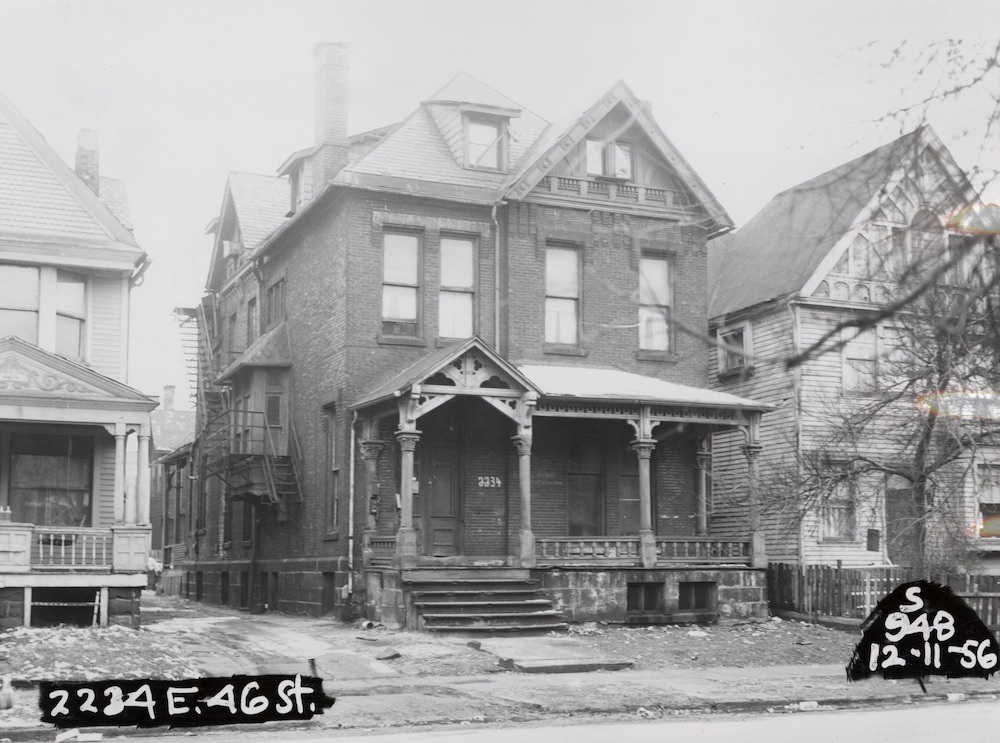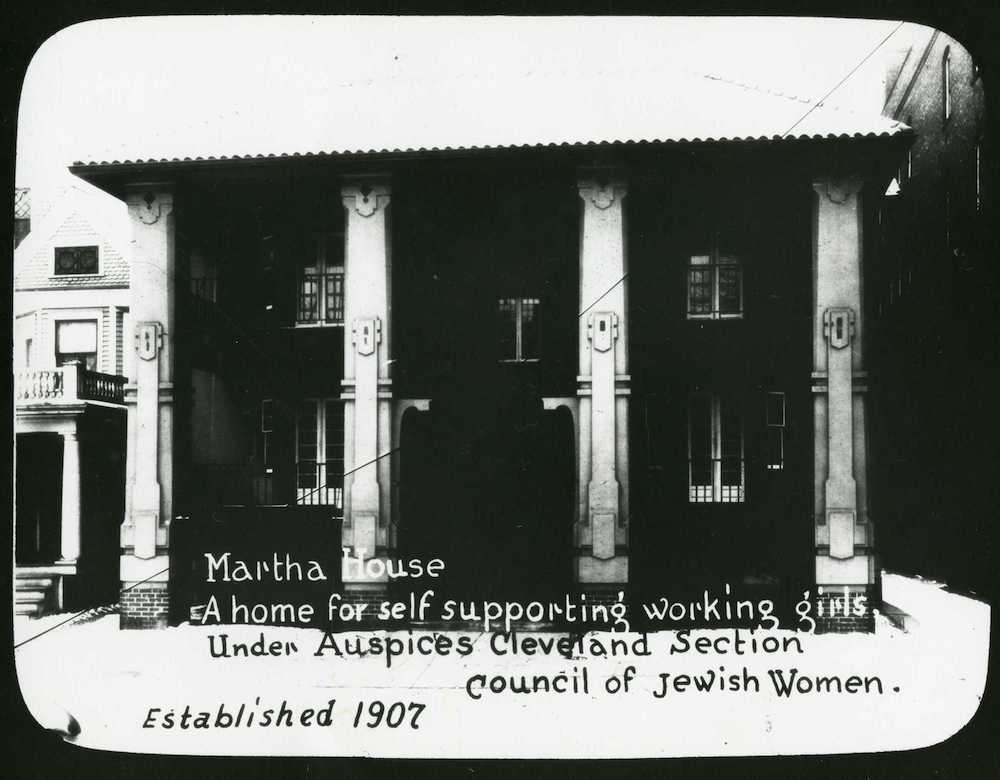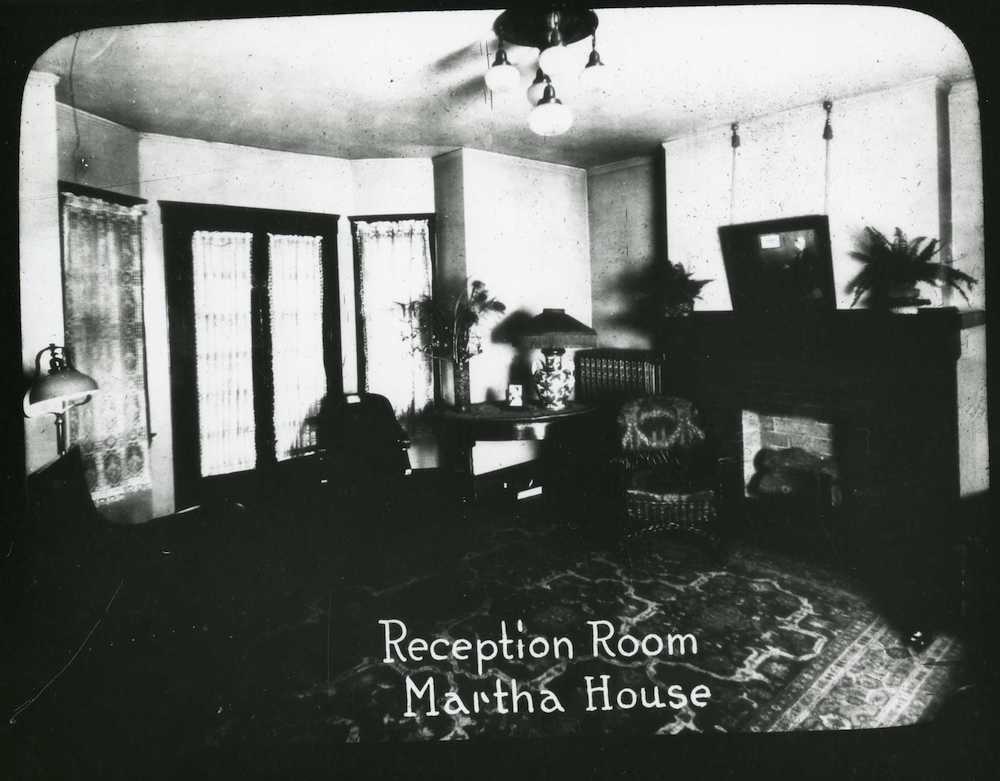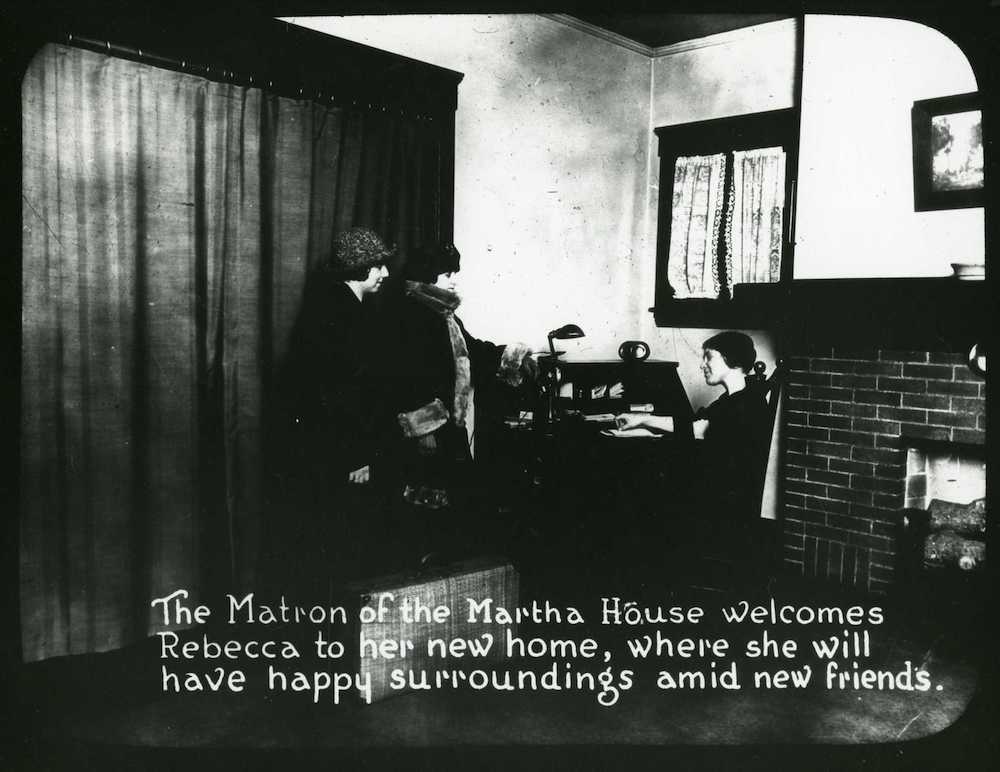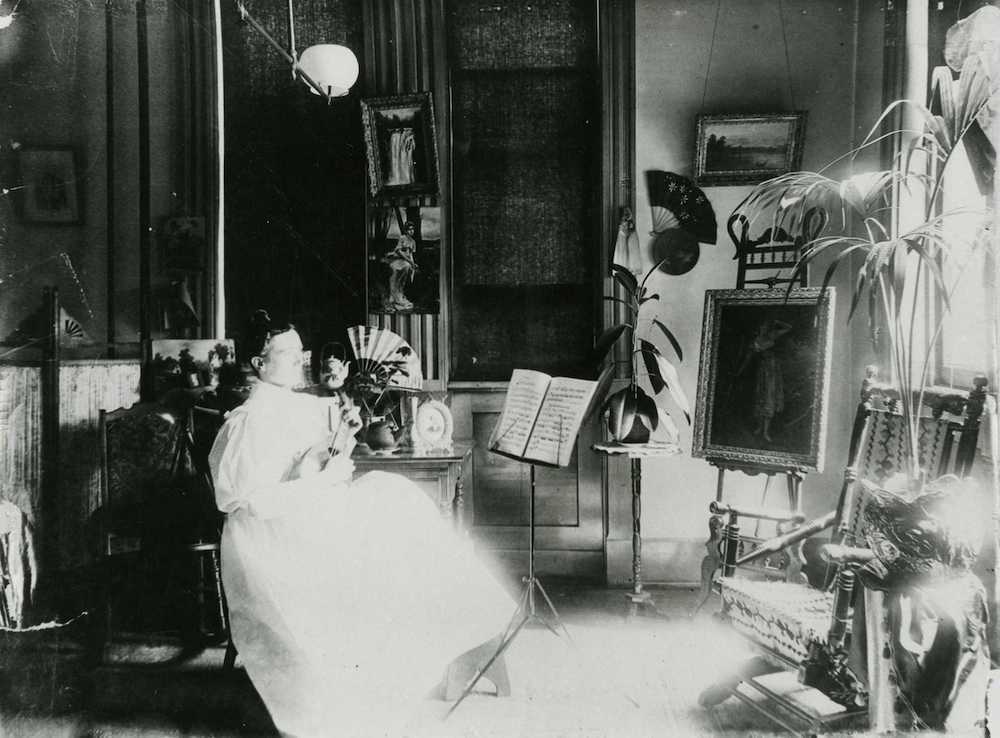
Established as a home for girls who came to Cleveland seeking employment more than a century ago, Martha House was considered to be a great blessing for many young Jewish single and self-supporting girls and young women from the ages of fourteen to twenty-two. In many cases, without relatives or friends, Martha House became an ideal residence, with all the comforts of home life at a moderate cost, and with the least possible restrictions to the girls’ personal freedoms. Named as a tribute to the memory of Martha Wolfenstein (1869-1906), gifted Jewish author and eldest daughter of Bertha (Brieger) and Dr. Samuel Wolfenstein, superintendent of the Cleveland Jewish Orphan Asylum, Martha House was first located at 2234 East 46th Street, between Cedar and Central Avenues, and was supported by the Cleveland Council of Jewish Women and its officers and trustees. A Board of Directors was created by the Council to administer the affairs of the organization, with vacancies being filled by appointment by the President of the Council.
The opening of Martha House in 1907 offered a most welcome solution to one of the gravest problems faced by Dr. Wolfenstein and his associates – the immediate future of discharged orphan asylum inmates who faced the world at an all-too-early age and for whom shelter and protection were tenuous. A new branch of work for the Council, Martha House was the direct outgrowth of those who recognized the needs of the city’s rapidly expanding Jewish population. While there was nothing in the constitution or governing by-laws to prevent the acceptance of others, it was understood that Martha House would benefit Jewish girls. However, the rules were framed with sufficient latitude to permit temporary housing for others in an emergency.
As reported in The Jewish Review and Observer (May 24, 1907), it was anticipated that the home would be fully-equipped and ready for occupancy by June 1, 1907, marking an important philanthropic event in the city. Initial monetary contributions were used for repairs and furnishings to the home, formerly the property of Mr. Malcolm Vilas. Once in running order, it was expected that the institution would be financially self-sustaining.
The building and its grounds were situated in a residential section of the city, not too remote from the centers of the Jewish population it aimed to serve. Additionally, it was adaptable to larger needs and permanence foreseen in its future. Described as “large and airy,” the home could easily accommodate 18 girls. The downstairs consisted of an entrance hall, parlor, library, dining room, kitchen, pantry, and one bedroom. Upstairs, there were sixteen bedrooms with white iron beds and large clothes presses. One room contained a large fireplace.
Residents were kept under the mild but wise surveillance of a governing board, whose interests were as much material as they were in the young girls’ moral and physical welfare. No efforts were spared to secure work for those temporarily unemployed as well as those inadequately paid for whom instruction would improve and increase their earning capacity.
At its opening, five applications for admission to Martha House had been granted. Mrs. Henry Woolf was to be the acting matron. In September of the following year, the board hired Miss Minnie Goldberg as matron. By this time, there were fifteen residents, whose occupations varied from stenographers, clerks, and factory hands to milliners’ and dressmakers’ helpers. By May 28, 1909, just two years since its June 1907 opening, Martha House was still under the capable guidance of Miss Goldberg. The fourteen residents enjoyed the surroundings and best influences the home provided.
Nine years later in 1918, a new home for Martha House was acquired, because the original East 46th Street site was found to be inadequate for the number of young women who applied for admission. Located at 2032 East 90th Street, the new Martha House was purchased by the Cleveland Council of Jewish Women with funds subscribed by the Jewish community.
Located on the west side of East 90th Street just south of Euclid Avenue and diagonally across from the Colonial Club building, the four-suite brick apartment house was remodeled to accommodate between forty and fifty girls. A formal dedication ceremony for the new Martha House took place on January 11, 1919, at the Hotel Statler, attended by various prominent dignitaries including Mayor Harry L. Davis. This new Martha House, which existed from 1919 to 1926, had a recreation room, dining room, laundry, pantry and kitchen on the basement floor. On the main floor were seven bedrooms, a living room, reading room, three baths and a resident worker’s apartment. There were fourteen bedrooms on the second floor.
As head of the household, Mrs. Emma Frensdorf took a personal interest in the activities offered, and aimed to make the house inviting for the few leisure hours the girls had. Not mere boarders, they shared in the house’s upkeep and décor, adding their artistic touches to the draperies and other furnishings. A spirit of pride and a hospitable atmosphere pervaded the young women’s new quarters. Rooms were attractive and well kept. Meals were well prepared. Every effort was made to look after the girls’ health. Medical services including those by house physician Dr. J. Selman and Mount Sinai Hospital were available at a nominal fee.
During the week, residents ate breakfast, straightened their rooms and went to their places of employment. In the evening after dinner, they were free to spend the time as they pleased. From time to time there was a program of activities which included: House Council; personality club; sewing; dramatics; piano lessons; dancing; lectures and concerts to which the community was invited. There were also classes in dressmaking, sewing and millinery. Dances were arranged periodically. Several ambitious girls attended night elementary and high schools. On Sundays, the girls typically performed personal duties and pastimes. In addition to secular holidays, Friday evenings and all the Jewish holidays were observed with appropriate ceremonies. Seats for temple services were provided for those who wished to attend.
From its opening nineteen years earlier in 1907, there had been a need for Martha House, a need which was championed by the Cleveland Council of Jewish Women and the community but that eventually changed. In a letter dated December 14, 1925, Mr. Charles Nemser, Executive Director of the Council Educational Alliance of Cleveland, requested the cooperation of the (National) Jewish Welfare Board in investigating the feasibility of turning over the facilities of Martha House to the ‘’Young women of the community, under a typical recreational-educational program of the YWHA type.”’
Emily Solis-Cohen, field secretary of the Jewish Welfare Board for Women’s Work, was assigned to this investigation. Her investigation, which occupied ten days, was devoted to interviews with executives and officers of organizations; study of activities and records of various organizations; results of related questionnaires and finally, studies previously made by other agencies, all of which were carefully reviewed. The facts ascertained with reference to the Jewish population (particularly the number of girls and young women); the activities of Jewish organizations; and other pertinent information were offered as the basis for the recommendations contained in the report.
The Report of Availability of Martha House – Cleveland, Ohio as a Jewish Center for Women and Girls – April, 1926 highlighted budget and demographic data. The Federation of Jewish Charities, of which Martha House was a member, paid nothing regularly towards its support except in the years 1916-1919 when it gave a monthly subsidy of $50 (excluding June and July), and during these same years an additional $1,000. The Council of Jewish Women contributed $700. In 1925, receipts were $8,838.42 and expenditures were $10,315.14, with a resulting deficit of $1,476. It was expected that $1,000 would have been required for the next four months, while plans were being made for the future.
The resident capacity of forty-two girls was utilized for several years but by 1923 the number of residents had dwindled to thirty. A study made by the Bureau of Social Research showed that of this number, twelve girls were foreign-born and had been in Cleveland less than five years. There were twenty-five wage earners (of whom twelve earned less than $20 weekly), while ten girls had relatives residing in Cleveland. After this study, certain changes were made in the admission policy. Finally, it was decided that since so many girls had relatives, the home was no longer functioning as a home for the homeless and that it would be better to try placing those seven girls with families.
By the time of its closing on March 1, 1926, there was little demand for the facilities the home provided. At its meeting in June 1926, the Jewish Recreation Conference of the Federation of Jewish Charities voted to recommend to the Council of Jewish Women that Martha House be sold and utilized for recreational purposes.
Images


